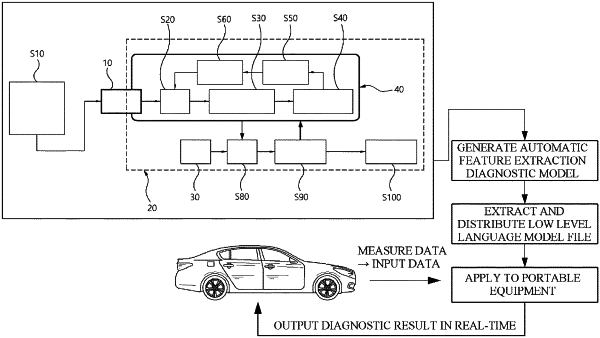| CPC G07C 5/0808 (2013.01) [G06N 3/042 (2023.01); H04L 12/40 (2013.01); H04L 2012/40215 (2013.01); H04L 2012/40273 (2013.01)] | 11 Claims |

|
1. An automation method of an artificial intelligence (AI)-based diagnostic technology for equipment application, the automation method comprising:
receiving one or more pieces of data inputted from among vibration data, noise data, and controller area network (CAN) data, which are collected from a rotating body in a vehicle;
a data input processing operation of trimming the input one or more pieces of data;
an operation of extracting features from the trimmed one or more pieces of data;
setting a setting value of a hyper-parameter with respect to the input one or more pieces of data among the vibration data, the noise data, and the CAN data; and
generating a total of N models to include both of machine learning (ML) and deep learning (DL) as N individual models and generating ensemble prediction model structures with respect to the N individual models,
wherein, as a parameter updating is being proceeded due to the hyper-parameter so as to minimize values of cost functions of the N individual models, a reward with respect to model accuracy performance is optimized and the ensemble prediction model structures of the N individual models change.
|